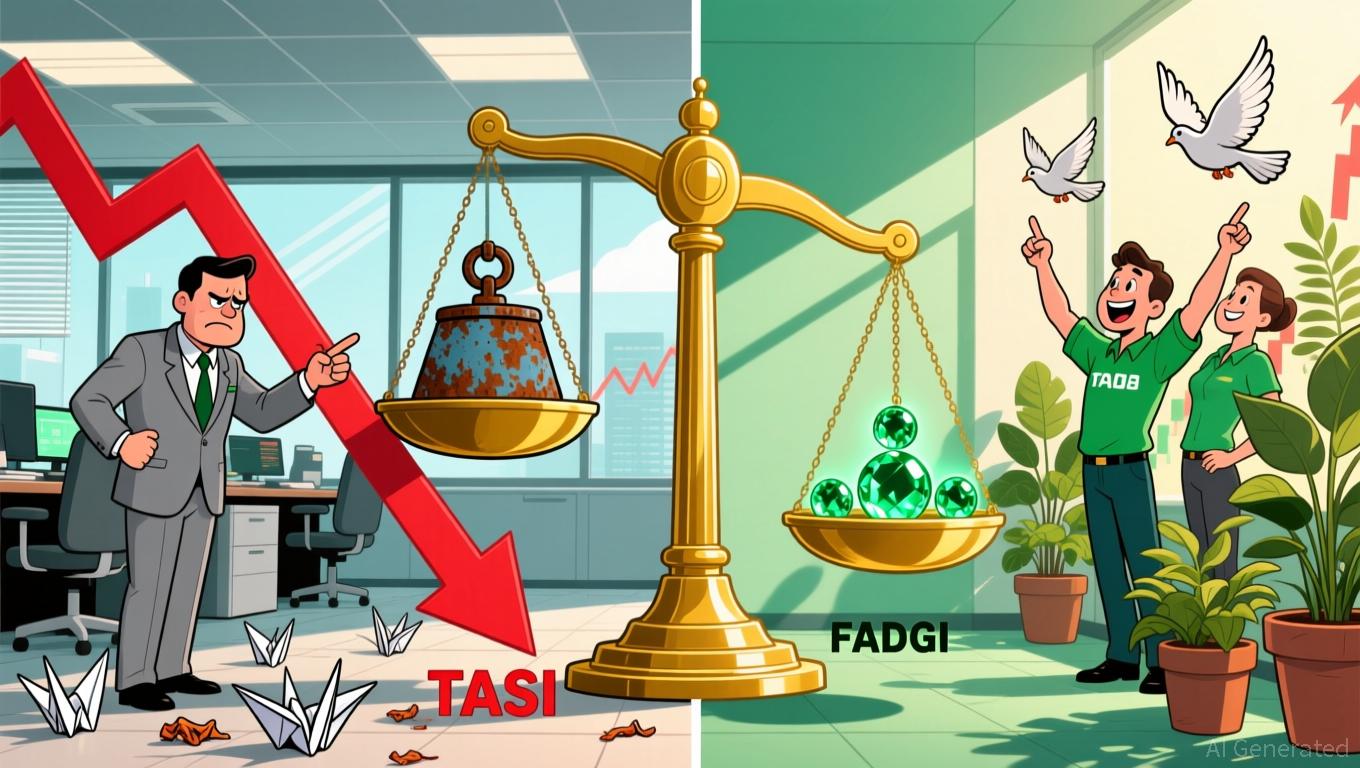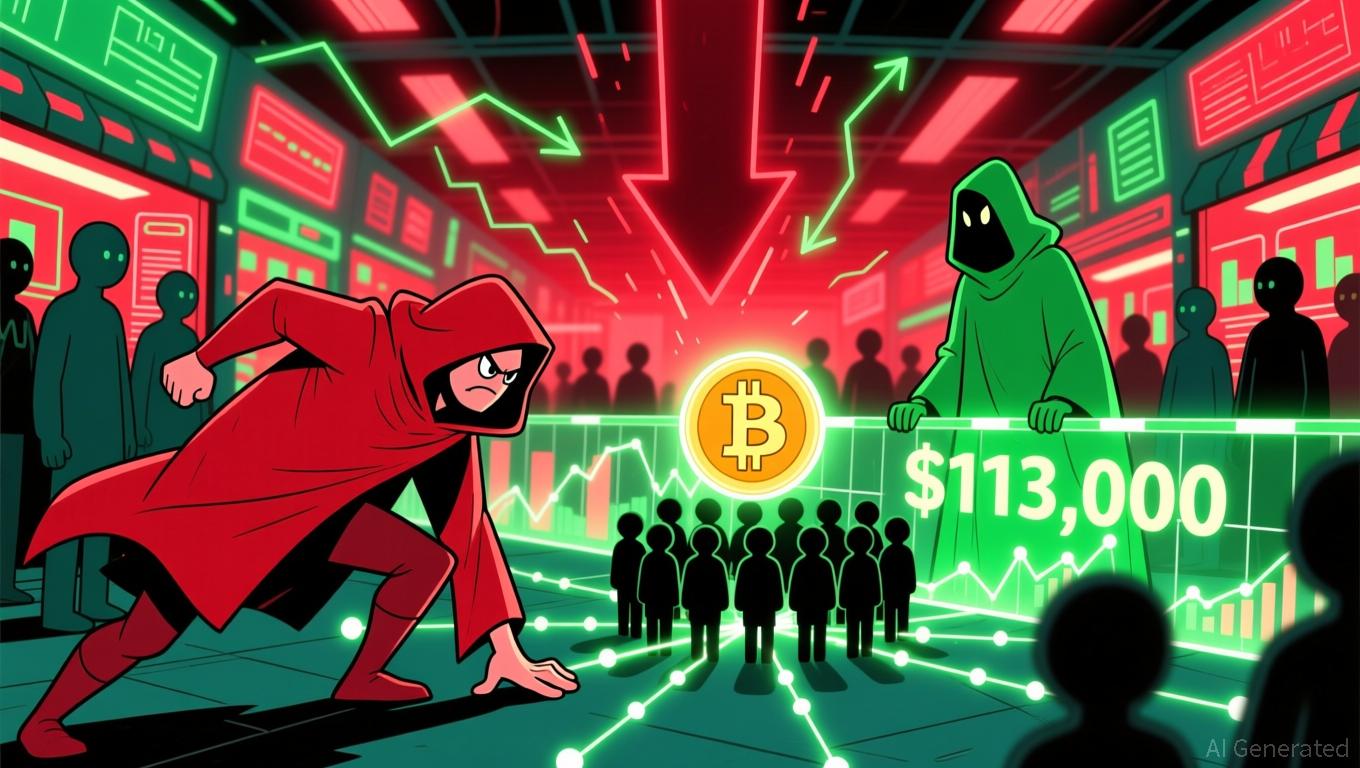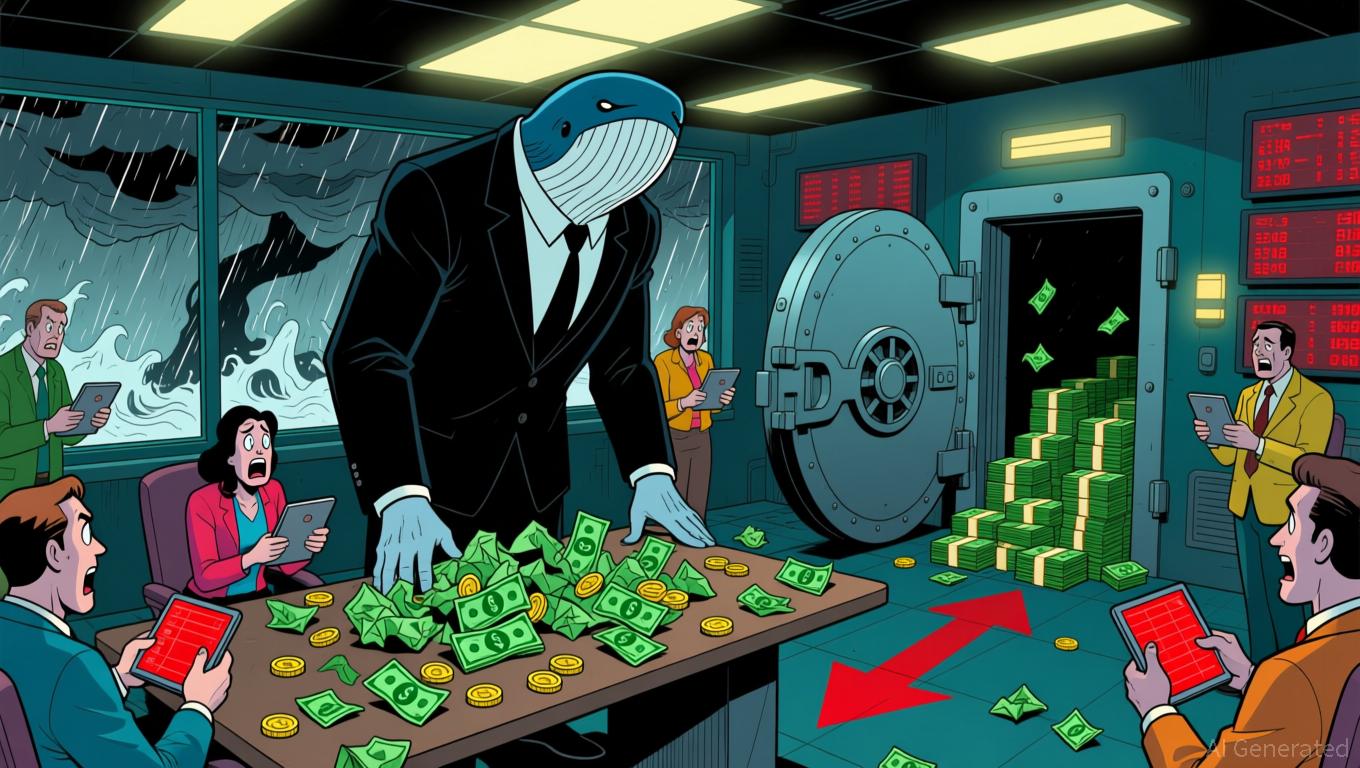Fed's Ambiguity Causes Dollar to Weaken and Triggers Divergent Responses in Gulf Markets
- Fed policy uncertainty weakens U.S. Dollar, causing Gulf markets to react diversely as rate cut odds drop to 65% from 90%. - OPEC+'s output pause and falling oil prices amplify market anxiety, while Saudi TASI declines and Abu Dhabi FADGI rises. - U.S. Treasury Secretary Bessent demands aggressive Fed rate cuts to address housing crisis, aligning with some officials' calls for easing. - Dollar Index hits 100+ amid geopolitical fragmentation, as global investors shift capital toward Europe and Asia. - Fed
The U.S. Dollar has lost ground as confidence in a December Federal Reserve rate cut fades, creating volatility in Gulf markets and the wider global financial landscape. Recent signals from the Fed, combined with weak oil prices, have heightened uncertainty. Market participants now estimate a 65% probability of a rate cut in December—down significantly from over 90% before Chair Jerome Powell's comments last week, according to a
Saudi Arabia’s TASI index slipped 0.7%, weighed down by losses in major banks and energy firms such as Al Rajhi Bank and ACWA Power, even as Saudi Aramco advanced 0.7%. Abu Dhabi’s FADGI index rose 0.3%, supported by a recovery in Aldar Properties, while Dubai’s DFMGI dipped 0.1% after Emirates NBD fell 2.7%, according to regional reports. These varied responses highlight the combined effects of dollar-pegged currencies and local sector trends.

Uncertainty around the Fed’s policy direction has also drawn criticism from U.S. officials. Treasury Secretary Scott Bessent described the housing sector as being in a “recession,” attributing the downturn to elevated mortgage rates linked to Fed actions, which he said are hitting low-income families hardest, according to a
Global financial markets have intensified the Dollar’s swings. The currency reached a four-month peak against the euro as risk aversion grew, while the yen made modest gains amid Bank of Japan inaction and speculation about possible intervention. The U.S. Dollar Index, which tracks the currency against six major peers, surpassed 100 for the first time since August, underscoring the Dollar’s appeal as a safe haven during geopolitical and economic uncertainty, as earlier reports indicated. In Asia, capital is increasingly moving toward Europe and Asia as investors diversify away from U.S. assets, with European markets seeing net equity inflows and relatively steadier growth prospects, the MarketMinute report also noted.
The Dollar’s future path remains closely linked to Fed communications and economic indicators. A prolonged government shutdown has postponed key jobs and inflation data, leaving the Fed to rely on mixed signals from private sources. With Powell maintaining that a rate cut is “not a foregone conclusion,” traders are preparing for a December meeting that could either confirm a policy shift or reinforce caution. For now, Gulf markets and global investors are maneuvering through a delicate balance, where every adjustment in U.S. policy sends ripples through energy, currency, and commodity markets.
Disclaimer: The content of this article solely reflects the author's opinion and does not represent the platform in any capacity. This article is not intended to serve as a reference for making investment decisions.
You may also like
KITE Token: Steering AI-Powered Altcoin Integration Amid a Divided Cryptocurrency Environment
- KuCoin prioritizes AI-driven tokens in 2025, listing PLAI and UAI while incentivizing liquidity through gamified campaigns. - KITE token gains traction via BingX pre-listing incentives and EVM-compatible blockchain for sub-cent AI agent transactions. - Retail investors drive KITE's $929M valuation despite volatility, contrasting institutional caution amid regulatory and macroeconomic uncertainties. - Agentic economy competition intensifies as KITE targets agent-aware governance, facing challenges from es

DASH Aster DEX: Could This Be the Upcoming Breakthrough in On-Chain Trading?
- Aster DEX merges AMM and CEX models for improved usability, targeting both retail and institutional traders. - Backed by Binance's ecosystem and CZ endorsements, it achieved top-50 crypto status via aggressive airdrops and CMC campaigns. - Hidden orders and AI-driven liquidity optimization drive growth, but regulatory risks and token supply concerns threaten sustainability. - With $27.7B daily volume and 2,200% token price surge, Aster challenges DeFi norms but faces competition from Hyperliquid and cent

Bitcoin News Update: Short-Term Holders Increase Holdings While Long-Term Holders Realize Gains—$100K Becomes Key Level
- Bitcoin fell below $100,000 as Coinbase premium hit a seven-month low, reflecting weak U.S. demand and ETF outflows. - On-chain data shows short-term holders (STHs) accumulating Bitcoin while long-term holders (LTHs) moved 363,000 BTC to STHs, signaling mixed market dynamics. - Analysts highlight a "mid-bull phase" with STHs absorbing selling pressure, and a $113,000 support level critical for potential rallies to $160,000–$200,000 by late 2025. - The Fear and Greed Index entered "Extreme Fear," and exch

Bitcoin Update: Large Holders Depart and Economic Instability Push Bitcoin Under $100K
- Bitcoin fell below $100,000 as OG whales BitcoinOG and Owen Gunden moved $1.8B BTC to exchanges, signaling bearish bets. - $260M in long positions liquidated amid SOPR spikes, while Trump's crypto policies and China's $20.7B BTC holdings added macro risks. - Bit Digital staked 86% of ETH holdings for 2.93% yield, while Coinbase's negative premium highlighted waning U.S. buyer demand. - Analysts warn consolidation phases often follow whale profit-taking, with geopolitical tensions and derivatives volatili
